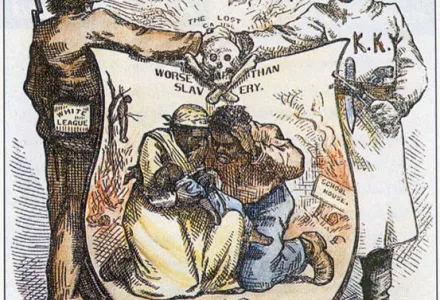Speaker: Kate Birkbeck, Ernest May Fellow in History & Policy, International Security Program
The birth of the modern American state was extremely violent. This period, between the Civil War and the First World War, is known as the "nadir" of American race relations, as well as the combustible period of industrial uprisings, and the age of indigenous warfare and conquest. At the center of each conflagration was a non-state armed group. This project starts with a simple question: where did these paramilitary groups committing often illegal violence, such as the Klan, get their guns? The answer is the federal government. The method is to follow the circulation of weapons after the Civil War, firstly from the surplus arms market decommissioned by the federal government, and secondly from the government directly through arms transfers. Charting these federal weapons shows how they ended up in the hands of local white supremacist groups across the American empire.
In this seminar, the speaker will lay out historical and policy implications of these findings. On the federal level, the speaker shows that the federal militia appropriation served as a fix to a lack of state capacity, one that was very flexible by place and race. And on the ground, arrival of arms was the basis of violence, foreclosed possibilities of political pluralism and enforced a distinctively American politics of white supremacy. She will also offer an overview of one of her case studies; the arming of the White League with federal breech-loaders in Louisiana in the 1870s, before the end of Reconstruction. And lastly, she will argue that this research impacts how we should think about the Second Amendment, the American arms trade, presidential pardons of insurrectionists, and militia movements past and present.
Admittance is on a first come–first served basis. Tea and Coffee Provided.





